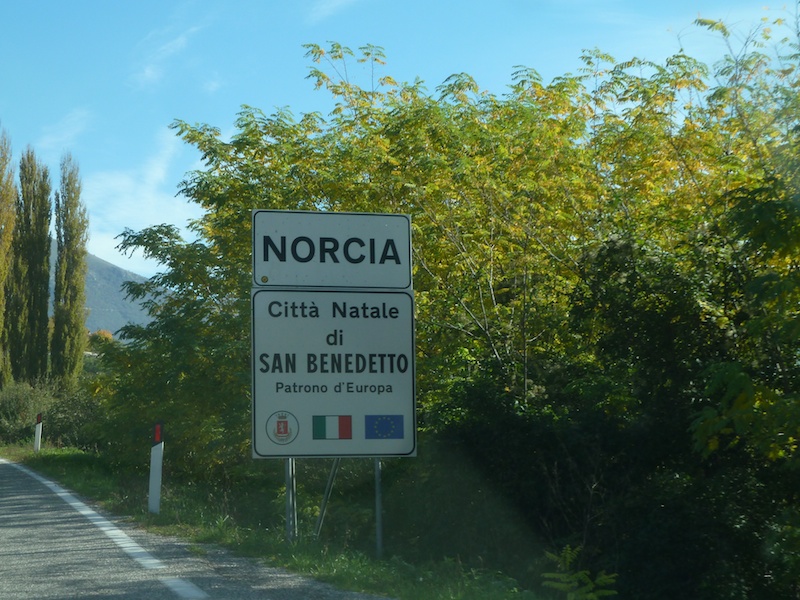 Regular readers of our blog, Bill and Suzy’s Excellent Adventures will be quite familiar with this month’s featured town. Although an hour’s drive from our villa in central Umbria, we have visited Norcia many times, and have written about it extensively. Read on and you will discover why it holds such charm for us and why you should give it a visit.
Regular readers of our blog, Bill and Suzy’s Excellent Adventures will be quite familiar with this month’s featured town. Although an hour’s drive from our villa in central Umbria, we have visited Norcia many times, and have written about it extensively. Read on and you will discover why it holds such charm for us and why you should give it a visit.
It may be a slight bending of the truth to claim that the Italian word for pork is “Norcia.” But it is absolutely true that Norcia – the town and the word – is synonymous with pork. Intertwined with swine, as it were. For here, in this remarkably beautiful mountain valley, Grease is not the word – unless you mean a greased pig. Pork is the word.
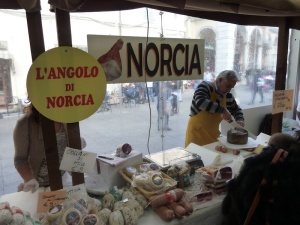 For centuries, Norcia has been the center of the universe of butchery, particularly pork butchery. Since the middle ages Norcia was known for pork butchery not just throughout Italy, but throughout the whole of Europe. The pork butchers who trained in Norcia and who plied their trade in every nook and cranny, village and town of Europe gave name to the Italian term for pork butcher – norcino. The term actually signifies a person from Norcia, just as Romano means a citizen of the Eternal City, Napolitano means someone from Naples and Cannarese means a person from our village of Cannara. But citizenship from Norcia is not typically on a speaker’s mind when he refers to another as a norcino. He has pork on the brain. Swine on the mind.
For centuries, Norcia has been the center of the universe of butchery, particularly pork butchery. Since the middle ages Norcia was known for pork butchery not just throughout Italy, but throughout the whole of Europe. The pork butchers who trained in Norcia and who plied their trade in every nook and cranny, village and town of Europe gave name to the Italian term for pork butcher – norcino. The term actually signifies a person from Norcia, just as Romano means a citizen of the Eternal City, Napolitano means someone from Naples and Cannarese means a person from our village of Cannara. But citizenship from Norcia is not typically on a speaker’s mind when he refers to another as a norcino. He has pork on the brain. Swine on the mind.
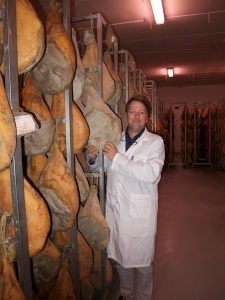 Why did this tiny walled city-state, lying in a remote valley ringed by the Sibilla mountains become pork central (or is that Central Pork?)? My personal theory is that Norcia’s pork prominence resulted from a confluence of three factors. First, the cool climate with its fresh breezes and clean air made the area not just an ideal locale for raising pigs, but also for slaughtering them and curing them. Prosciutto, one of the most delicious of all of the byproducts of pork butchery is the cured hind leg of a pig and it requires just two ingredients (aside from the pig’s leg) – salt and air. Although it is hard to imagine that this landlocked town was a natural home to salt, its cool air and benign fresh climate provided ideal air circulation for the curing process. Salt must have been brought in from the outside world to complete this magical transformation.
Why did this tiny walled city-state, lying in a remote valley ringed by the Sibilla mountains become pork central (or is that Central Pork?)? My personal theory is that Norcia’s pork prominence resulted from a confluence of three factors. First, the cool climate with its fresh breezes and clean air made the area not just an ideal locale for raising pigs, but also for slaughtering them and curing them. Prosciutto, one of the most delicious of all of the byproducts of pork butchery is the cured hind leg of a pig and it requires just two ingredients (aside from the pig’s leg) – salt and air. Although it is hard to imagine that this landlocked town was a natural home to salt, its cool air and benign fresh climate provided ideal air circulation for the curing process. Salt must have been brought in from the outside world to complete this magical transformation.
Knives were the second important ingredient in the development of the butchery trade centered in Norcia. I can only imagine that Norcia had as good a supply of the necessary ingredients for knife making as the next village, but it had an ingredient that other villages may not have had for developing the knifemaking trade – motive. For when knife meets pork the result is a product that could keep norcini in clover for a while, buying more knives and carving more prosciutti.
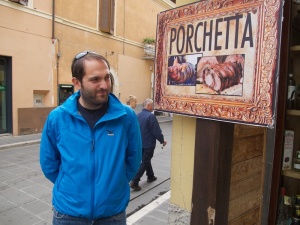 The final ingredient was skill, a knowledge of anatomy that told the norcino how and where to cut. This knowledge, like the knowledge that developed in numerous cities on the Italian peninsula that developed particular specialties (think Fabriano for paper making, Pistoia for pistol making), once developed, became self perpetuating. “I am a norcino because my father was a norcino and he taught me the secrets of the trade and allowed me to apprentice with him.” Or so I imagine the mantra may have gone.
The final ingredient was skill, a knowledge of anatomy that told the norcino how and where to cut. This knowledge, like the knowledge that developed in numerous cities on the Italian peninsula that developed particular specialties (think Fabriano for paper making, Pistoia for pistol making), once developed, became self perpetuating. “I am a norcino because my father was a norcino and he taught me the secrets of the trade and allowed me to apprentice with him.” Or so I imagine the mantra may have gone.
Whether my theory is valid or a load of bull (or pig), by the middle ages nocini were travelling across the face of Europe with their knives and tools, making visits to small towns where they would perform their handiwork for local farmers, for a fee. Along the way, interestingly, they became the first surgeons in Italy, transferring their butchery skills on pigs to helping humans deal with their ailments and physical necessities. Fortunately for us, the surgical portfolio remained secondary.
Arriving in Norcia, the drive from the central Umbrian valley is worth the trip itself. After passing through a kilometers-long tunnel outside of Spoleto, one emerges in an amazingly sheer, rocky mountain pass, winding along a two lane road flanked by the Nera River, each turn evoking oohs and ahhs. After a quarter hour or so the road begins to straighten (relatively speaking) and the sheer cliffs turn to towering mountains. And nestled in an incredibly verdant valley, typically bathed in sunlight piercing the crisp, clear air, is the town of Norcia. Debark from your car at one of the parking lots that line the town walls and enter one of the ancient gates.
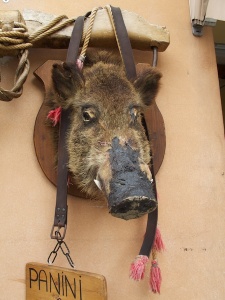 The walk from one end of Norcia to the other would take about 15 minutes if you walked without stopping. But it will take vastly longer. For you will stop many times along the main streets that lead to the central piazza, an enormous round piazza flanked with ancient churches and civic buildings and marked in its center with a giant statue of Saint Benedict, the patron saint of Norcia and of Europe itself, he being a native son of Norcia. And why will you stop? Because along the main streets every other shop will be a norcineria, a butcher shop, bursting at the seams with products of the butcher inside – salamis, prosciuttos, sausages, cutlets, livers, pancetta, guanciale, lonzo, capocollo, costelette, stinco. You get the point. From every beam, in every case, on every shelf and behind every counter is something to eat, the majority of it having recently resided on the body of a pig.
The walk from one end of Norcia to the other would take about 15 minutes if you walked without stopping. But it will take vastly longer. For you will stop many times along the main streets that lead to the central piazza, an enormous round piazza flanked with ancient churches and civic buildings and marked in its center with a giant statue of Saint Benedict, the patron saint of Norcia and of Europe itself, he being a native son of Norcia. And why will you stop? Because along the main streets every other shop will be a norcineria, a butcher shop, bursting at the seams with products of the butcher inside – salamis, prosciuttos, sausages, cutlets, livers, pancetta, guanciale, lonzo, capocollo, costelette, stinco. You get the point. From every beam, in every case, on every shelf and behind every counter is something to eat, the majority of it having recently resided on the body of a pig.
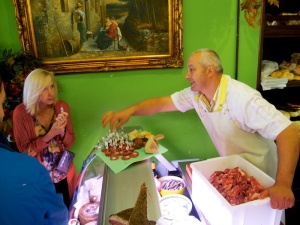 For the foodie or for the just plain curious, but definitely for anyone with a camera, a visit to a number of norcinerie is a must. Most announce themselves with heads of cinghiale or wild boar mounted outside the doorway or, often, with a whole stuffed boar standing on the sidewalk. Our personal favorite is la Richiama della Sibilla, a small, tidy butcher a half a block from the main square. There our good friend Claudio the butcher keeps his clientele happy plying the trade his father taught him more than 20 years ago. His shop is a regular stop on our Food and Wine tours and Claudio has impressed our guests by butchering an entire half pig (demi pork?) into all of its requisite parts for us. On one occasion he even prepared a whole baby pig for us, transforming it into a porchetta, which we brought back to the villa and roasted in the outdoor oven.
For the foodie or for the just plain curious, but definitely for anyone with a camera, a visit to a number of norcinerie is a must. Most announce themselves with heads of cinghiale or wild boar mounted outside the doorway or, often, with a whole stuffed boar standing on the sidewalk. Our personal favorite is la Richiama della Sibilla, a small, tidy butcher a half a block from the main square. There our good friend Claudio the butcher keeps his clientele happy plying the trade his father taught him more than 20 years ago. His shop is a regular stop on our Food and Wine tours and Claudio has impressed our guests by butchering an entire half pig (demi pork?) into all of its requisite parts for us. On one occasion he even prepared a whole baby pig for us, transforming it into a porchetta, which we brought back to the villa and roasted in the outdoor oven.
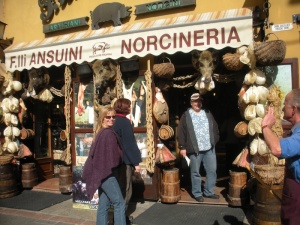 Any visitor to Norcia must stop by the most famous norcineria, the Figli Ansuini (the Ansuini Brothers). It really doesn’t get much more atmospheric than Ansuini, with its whole family of cinghiale outside and an interior so full of pork you have to watch your head.
Any visitor to Norcia must stop by the most famous norcineria, the Figli Ansuini (the Ansuini Brothers). It really doesn’t get much more atmospheric than Ansuini, with its whole family of cinghiale outside and an interior so full of pork you have to watch your head.
While Norcia is all about pork one mustn’t forget that Norcia is not all about pork. It’s about truffles, too. For in this remote part of Umbria one can find the entire family of truffles. Both growing in the ground and for sale in the various alimentari or gourmet shops that also line the streets. Here you find the black summer truffle in abundance, the least expensive variety of the aromatic tuber. Up the food chain and the price list is the precious black truffle of Norcia, the same variety the French call the Perigord truffle. If the black summer truffle is a 4 or 5 on an intensity scale from 1 to 10, someone turned the precious black up to 11. It is intense, incredibly aromatic, yet sublime, just what a truffle should be. And finally, here in Norcia one can also find the white truffle of Alba, which is actually found more often in Norcia than Alba. These beauties go for thousands of euros per kilo. And they are a bargain at that price.
So surrounded by all this incredible bounty where to eat? If you’re looking for a fine dining experience, the restaurant at the Hotel Grotta Azzurra is a good choice. There are a number of atmospheric dining rooms in this cavernous (no pun intended) restaurant and the dishes are top rate. Do expect, however, to be pestered into taking a look at the Hotel’s new buildings. It is worth a quick visit and most everyone leaves without buying a condo.
Our typical meal choice, however, is to head to the main square and munch on a panini made with local prosciutto, sitting out on the square watching the world stroll by. It is a cheap, simple meal, but the crusty bread, cool, fresh prosciutto and perhaps a little pecorino cheese are incredibly satisfying, especially after inhaling all the fumes from the norcinerie.
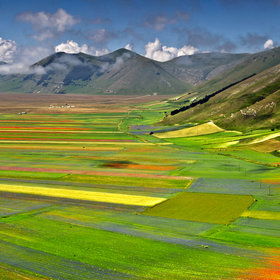 By taking a short lunch, you can save yourself enough time to make the trek to nearby Castelluccio, another walled city in the adjacent mountain valley that is famous throughout Italy not for pork but for lentils. Like Norcia, the drive – which takes about 45 minutes from Norcia along an incredibly steep and windy road with breathtaking panoramas – is worth the trip itself, especially if you go in the late spring or early summer. For then, as you first arrive at the top of the mountains and begin your descent into the valley that houses Castelluccio, you will be treated to a most spectacular sight, the almost lunar valley below, which in spring/summer is blanketed with seas of reds, yellows and blues, flowers that blossom in the expanse of lentil fields that carpet the valley. The town of Castelluccio is not itself of great interest, but is a nice place to stop and take a hike along the mountain paths that crisscross the landscape.
By taking a short lunch, you can save yourself enough time to make the trek to nearby Castelluccio, another walled city in the adjacent mountain valley that is famous throughout Italy not for pork but for lentils. Like Norcia, the drive – which takes about 45 minutes from Norcia along an incredibly steep and windy road with breathtaking panoramas – is worth the trip itself, especially if you go in the late spring or early summer. For then, as you first arrive at the top of the mountains and begin your descent into the valley that houses Castelluccio, you will be treated to a most spectacular sight, the almost lunar valley below, which in spring/summer is blanketed with seas of reds, yellows and blues, flowers that blossom in the expanse of lentil fields that carpet the valley. The town of Castelluccio is not itself of great interest, but is a nice place to stop and take a hike along the mountain paths that crisscross the landscape.
A daytrip to Norcia is not for those that want to visit museums or check sights off a list in a guidebook. But for a relaxing day outdoors, breathing in fresh air (with a slight aroma of pork) it is a must. And that is why we make a point to visit it on nearly every trip we make to Umbria.
For more on Norcia, and a special video profile on our friend Claudio the butcher, click on the video thumbnail below.


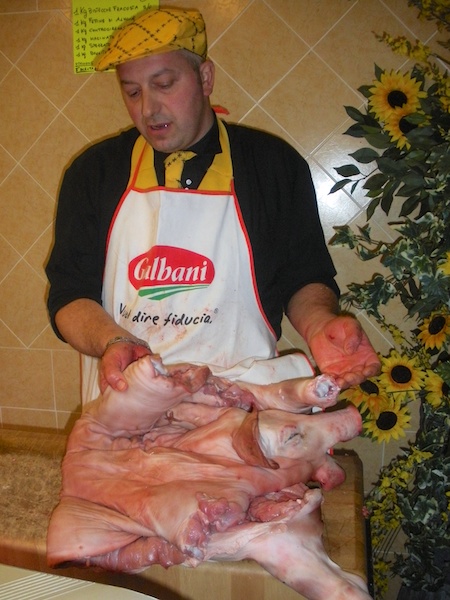
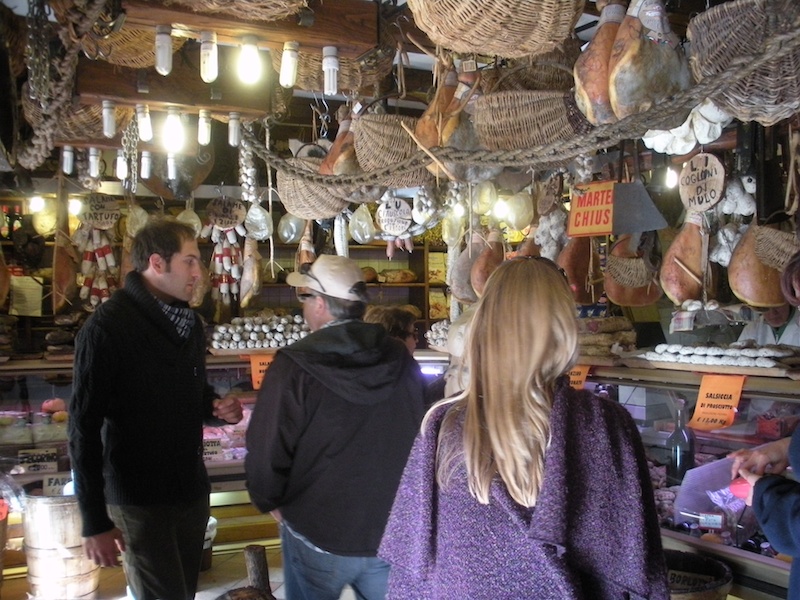
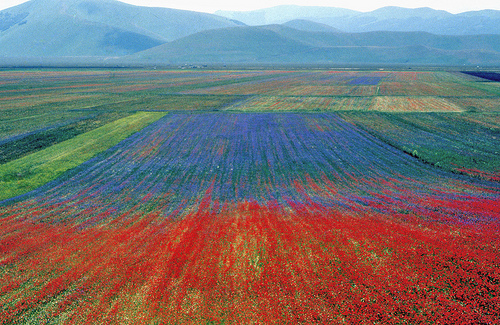
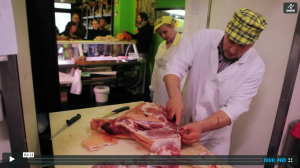
About The Author